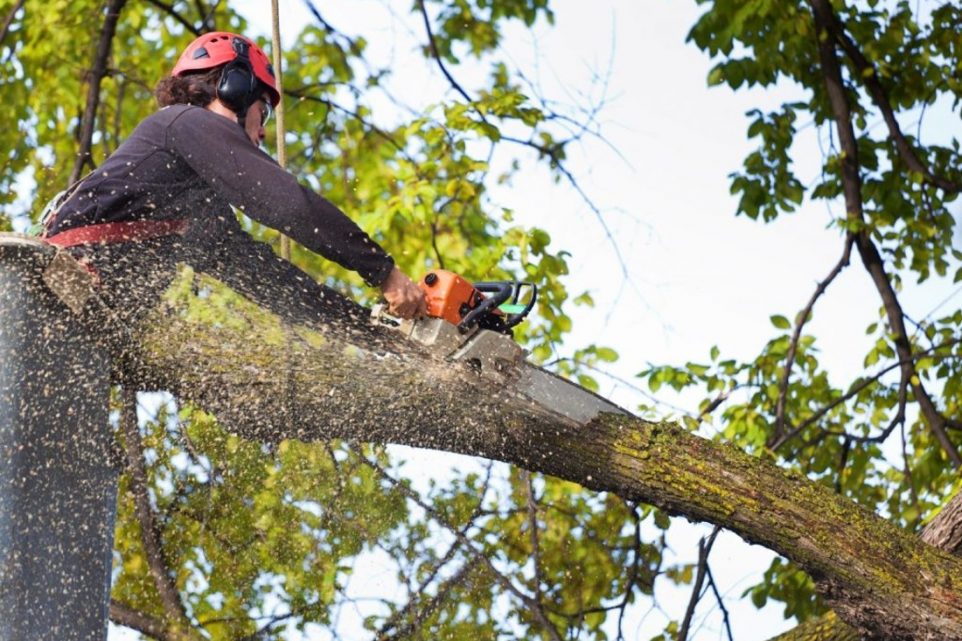How Much Does Tree Removal Cost? 6 Tips To Save Money On It

Removing a tree, whether for landscaping purposes, because of disease, or due to safety concerns, can be a necessary but costly endeavor for homeowners. Understanding the costs involved and finding ways to save money while ensuring the job gets done safely and efficiently is crucial. This article will break down the costs of tree removal and offer insight and tips on how to save money.
The Costs of Tree Removal
The cost of tree removal varies widely depending on several factors:
Size of the tree
Generally, the larger the tree, the higher the cost. Small trees (under 30 feet) are usually less expensive to remove than massive trees (over 60 feet), requiring more labor and safety precautions.
Tree’s condition
Dead, diseased, or rotting trees can be riskier to remove, potentially increasing the cost. Conversely, healthy trees are often easier and cheaper to remove.
Location
Removal can be more complex and costly if a tree is close to buildings, power lines, or other structures.
Accessibility
Easy access to the tree can reduce costs. The price can increase if the job requires special equipment to reach the tree.
Average Costs
The average cost for tree removal ranges from $150 to over $2,000. Small tree removal might cost between $150 and $500, medium trees from $500 to $1,000, and large trees from $1,000 to over $2,000. These are general estimates—the actual cost can vary based on your location and the abovementioned factors.
How to Save Money on Tree Removal
Get multiple quotes
Always get multiple quotes from different tree removal services. Prices can vary significantly, so shopping around can save you money.
Do some of the work yourself
If you’re capable and have the right tools, you can save money by doing some work yourself. For instance, you can cut up a felled tree and use an electric wood chipper to dispose of the branches. However, always prioritize safety and only do what you’re comfortable with.
Choose the right time of year
Tree removal services are often in higher demand during spring and summer. Consider scheduling tree removal during the off-season, like late fall or winter, when prices may be lower.
Ask about group discounts
If you live in a neighborhood where several homeowners need tree removal services, you might be able to negotiate a group discount with a local provider. Maintain Your Trees Regularly: Regular maintenance can prevent trees from becoming overly large or unhealthy, which is more expensive to remove.
Reuse or sell the wood
If the tree is healthy, you can save or make money by selling the wood. Alternatively, you can use an electric wood chipper to turn the branches into mulch for your garden, saving on landscaping costs.
Check for local subsidies or programs
Some local governments offer subsidies or programs for tree removal, especially if the tree poses a risk to public safety or utilities.
Other Considerations
Permits
In some areas, you might need a permit to remove a tree, which can add to the cost. Check with your local government for requirements.
Safety
Tree removal can be dangerous. Professional services have the experience, tools, and insurance to handle the job safely.
Disposal
Consider the cost of disposing of the tree. Renting or buying an electric wood chipper can be a cost-effective solution, as it reduces the tree to mulch, which is easier and cheaper to dispose of.
Insurance
Ensure that any tree service you hire has proper insurance. This protects you in case of accidents or damage to your property.
Conclusion
Tree removal can be a significant expense, but understanding the factors that affect the cost and knowing how to save money can make a big difference. Whether hiring the right service, doing some work yourself with tools like an electric wood chipper, or scheduling the removal during the off-season, there are several ways to reduce the costs. Always prioritize safety and consider your landscape’s long-term health when removing trees.